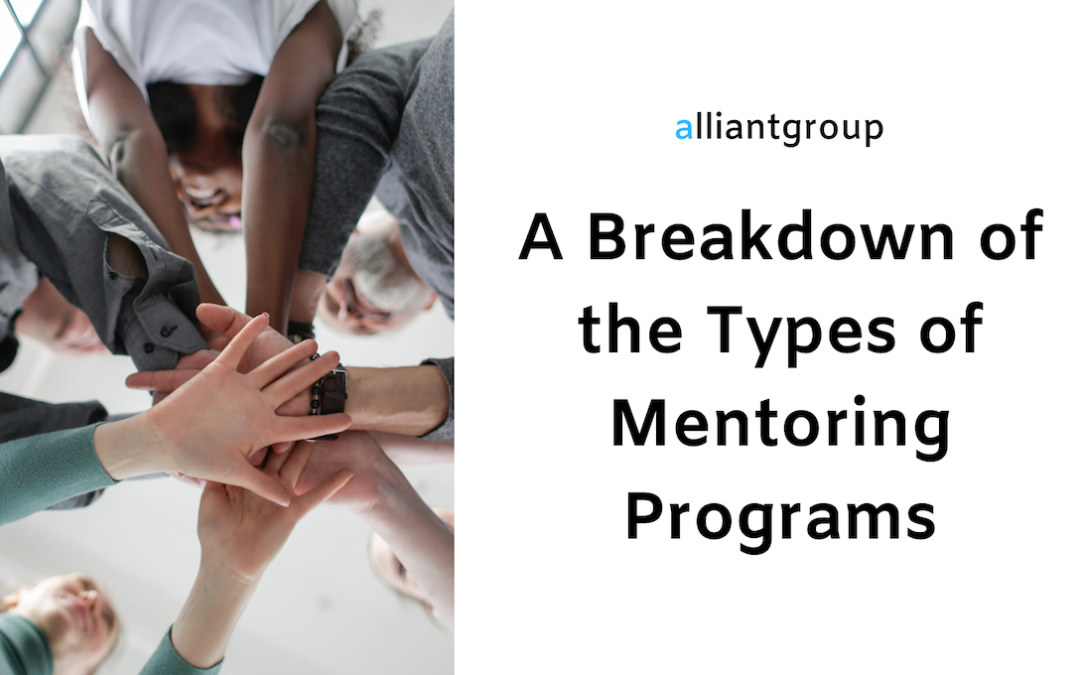Human resources are often faced with a variety of complex challenges. Companies are increasingly implementing mentoring programs to help tackle these issues. When deciding what type of mentoring program is best for your organization and employees it’s important to have a clear understanding of the different types of programs, how they work, and what the benefits are.
Here is a breakdown of the types of mentoring programs.
Career Mentoring
Career mentoring is easily the most common type of mentoring program. Career mentoring is based on a one-to-one mentoring relationship that can last between six and twelve months. Career mentoring allows employees to gain new skills while engaging with coworkers and the company. This type of mentoring helps to develop leaders and retain the most skilled employees within an organization.
Furthermore, career mentoring can help to better align everyone with organizational goals. The desired outcome of career mentoring is to improve employee retention, allow employees to take ownership of their own development, and deliver cost-effective and scalable programs to provide people with the opportunities necessary to improve their professional careers.
Employees who participate in career mentoring programs are in a much better position to advance their careers rather than feeling stagnant in their current roles. Providing employees with the opportunity of career mentoring is a fantastic way to display that the company is investing in them and their careers. Mentoring has a very collaborative nature and allows people to form interpersonal relationships that help them to shapen skills, gain new ones, and overall increase their levels of engagement.
High-Potential Mentoring
High-potential mentoring is catered towards the top talent of an organization. These high-potential individuals are very valuable assets, however, retaining their talent can often be difficult. Connecting top performers with each other and their leaders is imperative for the health of a business.
The purpose of high-potential mentoring is to provide employees with vital career development experiences. The mentoring program should include exposing the participants to different areas of the business, developing their leadership skills, and ensuring that they have everything they need to excel in their positions.
Not only does mentoring high-potential employees help to improve their retention, but it also rewards the highest performing with personal guidance, attention, and the opportunity for professional development. By providing top talent with the ability to deepen their knowledge, leadership skills, and engagement levels it is displaying the company’s investment in their careers.
Diversity Mentoring
Diversity mentoring is aimed at engaging and developing specific employees and can last between six and twelve months. Promoting an inclusive work environment is critical to foster creativity, innovation, and job satisfaction. In fact, studies have shown that companies that are more ethnically and gender diverse more likely to gain above-average financial returns.
Building a team of diverse talent can help to develop and retain talent as well. The long-term support that diversity mentoring provides can help companies stand out from the competition. The purpose of diversity mentoring is to provide employees with the opportunity and ability to voice concerns, find solutions, and overcome any obstacles. The result will be employees who can perform at the highest level.
Collaborative Mentoring
The collaborative mentoring exists in a format that allows employees to find and connect with peers who share their interests and learning objectives. The group is usually lead by a designated team member who will set the expectations and help to organize when the group meets. Each circle should consist of five to eight people.
The collaborative nature of this type of mentoring promotes the sharing of knowledge across positions and departments, as well as connecting people with varying skillsets. Coworkers who may not have ever interacted can create bonds that have a positive impact on their lives, in and outside of work. These collaborative mentoring groups can be specific to departments, or certain employee populations, such as veterans or LGBTQ individuals.
When everyone’s interests are in sync the culture of the workplace will thrive. An effective mentoring program can align employees’ purpose with that of the organization.

